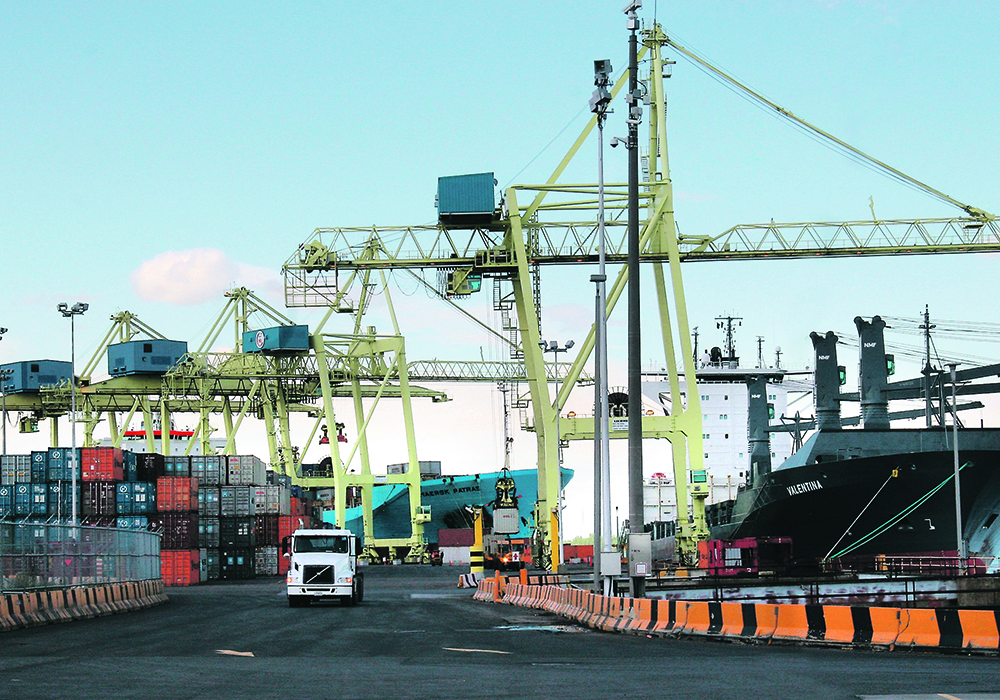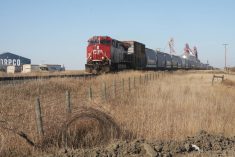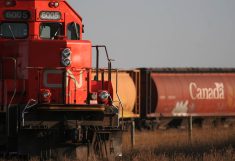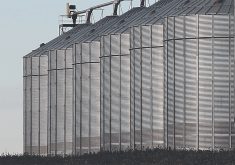National supply chain office has been established to help stakeholders take steps to alleviate ‘pinch points’ in the system
OTTAWA — Canada’s supply chain is more fluid than it was during the pandemic but still not performing as well as it could, said panelists during a discussion at the Canadian Federation of Agriculture annual meeting.
Federal deputy minister of transport Arun Thangaraj said pressures still exist.
“The pinch points still exist. It is imperative that we tackle them now.”
He said the national supply chain office, as recommended by a task force, has been established to help all the partners do what they can to alleviate those pressures.
Read Also

Using artificial intelligence in agriculture starts with the right data
Good data is critical as the agriculture sector increasingly adopts new AI technology to drive efficiency, sustainability and trust across all levels of the value chain.
The co-chair of the task force, Jean Gattuso, said that’s a positive development, but too many things still aren’t fixed.
Supply chains have to be competitive, efficient and reliable, he said.
“Not being reliable is probably the worst sin.”
Gattuso said Canada requires bullish objectives to ensure reliability. He pointed out that 80 percent of the world’s ocean freight is controlled by eight companies, which will take their containers to American ports if they can’t count on Canada.
“Is Canada a reliable partner? No. We still have work to do,” he said.
Government could enact regulations to change that status, he added, and the supply chain office is looking at these issues.
Gattuso said the economic slowdown in 2022-23 resulted in better freight rates and more shipping capacity, and that could accelerate action to transform the supply chain.
He said investment in critical infrastructure must go up.
“For every dollar managed by the eight largest pension funds in Canada, only 75 cents is invested outside of Canada. Of the 25 cents invested in Canada, two cents is invested in infrastructure,” he said.
That isn’t going to be enough money to create the kind of future a trading nation like Canada wants or needs.
Ron Lemaire, president of the Canadian Produce Marketing Association, said when disruption occurs, the farmer ends up paying the most.
He likened the supply chain to an orchestra, in which all the instruments have to be tuned to play together. If one is out of tune, everyone notices.
“I haven’t heard anyone say food is essential. We’re missing that key component in all of our policy and regulation in Canada,” he said.
“How do we actually work in supply chains when I see potatoes sitting at the Montreal port, hidden behind containers, destined for the market and they can’t even be identified?”
This type of disruption leads to questions of how food is moved to rural and remote areas and what that means for food security.
Gattuso said the entire supply chain is still full of bottlenecks and contains issues with capacity, distribution and infrastructure.
Marc Brazeau, chief executive officer of the Railway Association of Canada, said an example in the grain sector is the inability to load grain in the rain at the Port of Vancouver.
The ports at Seattle and Portland have been able to do this for some time, he said.
“The Port of Vancouver has estimated that solving that problem would unlock about seven percent in new capacity. That’s significant.”
He said governments could encourage that type of investment at terminals through something like accelerated depreciation. Maximizing port capacity through 24/7 operation would also help.
“If rail cars do not arrive at a country elevator on time because it’s raining in Vancouver, it’s tough to blame the railways if we don’t have some of those solutions in place,” he said.
Brazeau also said railways want the extended interswitching pilot project to be repealed so that rail car movement happens in Canada.
“Frankly, what we saw in 2014 to 2017 (when extended interswitching was in place) was more traffic moving south,” he said.
“That means more jobs headed south because those containers and those goods are headed to ports.”
Gattuso said Americans are investing heavily in their ports.
“We cannot look at ourselves and say we think we’re OK,” he said.
Lemaire added that the U.S. requires timely data. Canada can’t sit on data and say the environment is competitive.
Panelists said Canada should look to other countries for best practices to improve the supply chain overall.
















